UNIT 3.6
INTERNATIONAL TRADE
3.6.1 • Trade and balance of payments;
3.6.2 • Foreign exchange rates (floating and fixed exchange rates) their nature,
3.6.3 • function and determination;
3.6.4 • Trade and its determinants;
3.6.5 • Markets and demand for imports and exports;
3.6.6 • Open Economy (Basic concept)
3.6.7 • Introduction to World Trade Organization
International Trade
MEANING
International trade refers to the exchange of goods and services between the countries.
BASIS OF INTERNATIONAL TRADE
International trade arises because:
(a) The production of different kind of goods requires different kind of resources used in
different proportions.
(b) The various kind of economic resources are unevenly distributed throughout the world.
(c) The international mobility of resources is extremely limited.
For these reasons nations which have an abundance of land relative to labour will concentrate on the production of land intensive commodities such as wheat and meat. They will exchange these goods for capital intensive goods such as T.V., Computers which are produced by those countries who have abundance of capital relative to land.
ADVANTAGES OF INTERNATIONAL TRADE.
Nurkse calls trade as the engine of growth. We find the statement quite true on the basis of a number of reasons. Some are given below.
(1) Optimum use of resources. Trade encourages to produce and export those commodities in which a country has comparative advantages. Resources are allocated automatically to most efficient use.
(2) Increase in production: Trade encourages specialization. Trading countries obtain maximum production by allocating available resources to best possible use.
(3) Raw material for industries. International trade has made it possible to set those industries in a country for which raw material is not available locally. eg establishment of ghee industry in
(4) Increase in employment opportunities. International trade encourages specialization and expansion of export oriented industries. Expansion of industrial base provides enormous job opportunities in a country. Textile industry is an example in
(5) Discouraging of monopolies: International trade discourages monopolies in a country and introduces a healthy competition among sellers. eg Import of tractors has broken up the monopolies of local manufacturers and prices of tractors in
(6) improved quality of goods. Foreign trade compels manufactures to improve the quality of their products. If they do not do so, their products remain unsold.
(7) Inventions and innovations. There is very tough competition in international market. Therefore every producer tries to differentiate his product from other similar products. That is why he uses peculiar ideas in production and tries to invent new goods.
(8) Import of technology: The deficiency of technology in a developing country can be covered by importing technology.
(9) Capital inflow: Trade makes capital to move from developed countries to developing countries. This inflow of capital encourages development in a developing country.
(10) Economic stability: International trade can help to stabilize an economy. Expansion of export opens new job opportunities and Imports or export of goods can stabilize prices in an economy.
(11) Extent of market. Introduction of trade increase the extent of the market and therefore surplus produce can be exported to different markets of the world and industries can be encouraged to further increase their production.
(12) Emergencies: During the days of emergencies and natural calamities, shortages of food and other necessities may occur. This situation can be tackled by importing required commodities fro other countries.
DISADVANTAGES OF INTERNATIONAL TRADE
Although there are many advantages of international trade yet there are certain disadvantages as well. Some major disadvantages are discussed as under
(1) Economic dependence
(2) Imported inflation
(3) Cultural Problems
(4) Loss in case of political differences
(5) Problems of adverse balance of trade
(6) Dumping
(7) Problems for local industry
THE THEORY OF COMPARATIVE ADVANTAGE
THE THEORY
"If one country can produce each of two products more efficiently than another nation, then the country should specialize and export the commodity for which its comparative advantage is more or comparative disadvantage is less.”
The two nations will then have more of both goods by engaging in trade.
Explanation:
To explain this theory we make following assumptions.
1) labour is the only factor of production
2) The quality of labour is same in both the countries
3) There is no cost of transporting goods from one country to another
4) There are no trade restrictions.
5) There is perfect competition in factor and product markets.
Under these conditions if both the countries apply one day of labour (one worker working
one day) in the production of wheat and cloth, the resulting output is as follows
Country cloth wheat cost ratio (cloth/wheat)
It is clear that
SITUATION BEFORE TRADE.
In
SITUATION AFTER TRADE.
Now
Fixing The Rate Of Exchange
The rate of exchange thus be between the two limits.
1 units of wheat=1 units of cloth (minimum) & 1.5 units of cloth (max)
Gains From Trade:
Suppose the rate of exchange is settled at:
1 units of wheat = 1.3 units of cloth
Now by specializing in the production of wheat
CRITICISM:
(1) Labour cost assumption is unrealistic.
(2) Labour is not homogeneous.
(3) Labour is mobile between countries.
(4) Cost of transportation.
(5) Tariffs and customs duties.
(6) Limited scope.
(7) Complete specialization.
(8) Perfect competition.
.
BALANCE OF PAYMENT AND BALANCE OF TRADE
BALANCE OF TRADE.
Balance of trade refers to
"Account of the money value of merchandise imports and exports during a given period of time."
In it we include only visible items of export and import and leave the invisible one.
BALANCE OF PAYMENT.
The Balance of payment refers to
"The difference of total receipts and payments of a country with rest of the world during a given period of time."
The balance of payment includes in it, not only the visible items of export and imports but also the invisible items such as payment for services, expenditures on foreign missions etc.
DIFFERENCE BETWEEN THE TWO:
Balance of trade includes only the transactions regarding physical or visible goods while Balance of payment show the over all external payment position of a country's international transactions of both the goods and services and other monetary transactions. To sum up the balance of trade is a part of balance of payment.
MEANING OF DEFICIT IN BALANCE OF PAYMENT:
When the total receipt of a country fall short of total payment it has to make to the foreign countries for the purchase and sales of goods and services and other items, the balance of payment is said to be in deficit. Persistent deficit in balance of payment of a country indicates the weak performance of an economy and therefore steps must be taken to correct the deficit in B.O.P.
CAUSES OF DEFICIT IN BALANCE OF PAYMNENT
Following are the important causes of deficit in balance of payment of a country.
1: Inflation
2: Adverse TOT
3: Structural backwardness
4: Early stage of development
5: Political instability
6: Population explosion
7: Consumption oriented society
MEASURES TO CORRECT ADVERSE B.O.P.
Government can resort to various measures for improvement in balance of payment position. Some suggested measures are mentioned as under.
1) Monetary and fiscal policies.
2) Import substitution policy.
3) Export promotion measures.
4) Export of value added goods.
5) Diversification of exports.
6) Tariff concession to export oriented industries.
7) Quality control measures.
8) Modernization of Agriculture.
9) Control on invisible imports.
10) Increase in workers remittances.
11) Devaluation of currency.
12) Regional trade agreements.
13) Economic ties with Islamic world.
14) Population control.
MEANING AND DETERMINATION OF EXCHANGE RATE
MEANING:
The rate at which currency of one country is exchanged with the currency of other county is called exchange rate. In other word units of currency of a country which are required for the exchange with each unit of foreign exchange i.e. U.S $ dollar e.g. Rs. 57 = $1, is the exchange rate between US$ and Pak rupee.
There are three methods or systems for determining the exchanges rate.
(1) Floating exchange rate system.
(2) Managed floating exchange rate system.
(3) Fixed exchange rate system.
In the following discussion determination of exchange rate in floating exchange rate system is discussed.
FLOATING EXCHANGE RATE SYSTEM
When the exchange rate is freely determined by the forces of demand and supply of foreign exchange , it is called floating exchange rate. Thus, when demand/supply of foreign exchange rises or falls the exchange rate moves accordingly.
To explain this system we assume that we are dealing with the exchange rate of Rs. in terms of US $
DEMAND FOR FOREIGN EXCHANGE :
Basically the demand for foreign exchange depends upon the demand for imports by that country eg. Demand for import by
SUPPLY OF FOREIGN EXCHANGE :
On the other hand, the supply of foreign exchange or US $ will depend upon the exports of a country, for example
EQUILIBRIUM :
Thus, the equilibrium between these two forces of foreign exchange will determine the exchange rate under the floating exchange rate system. This is shown in two hypothetical diagrams below :
On the vertical axis we measure the units of Rs. per unit of US $ and on the horizontal axis we measure the quantity demanded and supplied of foreign exchange i.e. US $. The curves, i.e. DD represents the demand for
|
|
Supposing that the DD curve shifts
upward to D'D' meaning that demand for
Since more Rs. are required per US $ this shows that the Rupee has depreciated in the international market and that the

